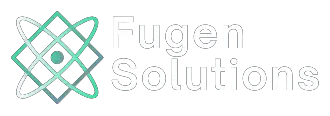Do People see you Inverted when taking a Photo? | Do I look like same in Mirror as in Real Life?
People perceive the polar opposite of what you see in the mirror in real life. This is due to the mirror’s ability to reverse its reflected pictures. In whatever view it reflects, a mirror alternate between left and right.
Does the rear camera distort your face? The answer is confirmed; phone cameras distort our faces. Since the camera is too near to our face, our face, for example, seems much more prominent when we shoot selfies. This is related to the posture wherein we hold our phones when shooting images.
Are inverted images correct? There’s no easy way to tell you this, yet the inverted filters on TikTok itself are accurate. The filter doesn’t use any sophisticated technology; it just rotates the image and displays the film’s reflection instead of just the footage itself.
Is it the mirror or the camera that is more accurate?
If you think about it, what you have in the mirror seems probably the most realistic image of yourself since it is that you see every day – if you see yourself more in pictures than in mirrors.
Suppose you believe you always look good in the mirrors than in pictures. In that case, the latest TikTok craze is unlikely to help you happy any better.
The trend flips the front camera using the app’s inverted filter, basically presenting how you genuinely seem to others rather than the mirrored form that you’re accustomed to being seen in the mirror. Unfortunately, the practice goes a step further to make matters worse. Users immediately switch between inverted and “normal” forms to see how proportional their face is.
How Accurate Is Tik Tok’s Horizontal Face Filter?
Seeing oneself via the inverted filter may seem strange. When you look in the mirror, you’re gazing at a reversed picture of yourself. When you use the filter, you’re looking at your “unflipped” view or the representation of yourself that anybody sees when they look at you.
When we gaze at an inverted image or video, it might feel like we’re seeing a whole other version of ourselves—mainly because our faces are not symmetrical. While the two parts of your forehead might not even appear to be that dissimilar at first, having seen an unflipped image of oneself might be unsettling since your bones do not match up.
Is the rear camera more accurate?
The rear-facing camera’s megapixel quality far outstrips that of the front-facing camera. Because the back-facing camera has 12 megapixels and the front-facing camera has 7 megapixels, the image quality in the back-facing camera is nearly twice as good. The more pixel data you have, the higher the image quality you can produce.
Is a Selfie how others see you?
One crucial factor is that photos usually show us the opposite of what we see in the mirror. For example, when you take a selfie with some (but not all) apps or the front-facing camera on an iPhone, the resulting image captures your face as it appears to others. The same is true for cameras that aren’t phone cameras.
Why is the inverted filter wrong?
When you use the filter, you’re looking at your “unflipped” image or the version of yourself that everyone else sees when they look at you. We prefer our mirror images to our accurate ideas or reflections on what others see in self-perception.
Why do I look worse inverted?
When we see what we see in the mirror flipped, it doesn’t seem comforting because we see rearranged halves of two very different faces. Your features do not line up, curve, or tilt as you are accustomed to seeing them. “… Looking in the mirror leaves a lasting impression.
Simply put, the primary way we see ourselves is through a mirror. However, this is merely a reflection of how we appear — a reversed image. Selfies and video calls are taken with a smartphone’s front-facing camera to re-flip our vision, presenting us with the version that the rest of the world sees.
That’s because the image you see here in the glass each day is one you assess to be distinct and therefore better-looking, and that’s because the idea of self you have seen in the light every day is someone you sense to be creative and thus better-looking. When you snap a photo of yourself, your face seems to be reversed due to how you are conditioned to perceive it. A more attractive version of oneself As a result, whether you take a photograph of yourself, it looks like your face is reversed from how people are used to viewing it.
Why then does my face appear to be uneven in photographs?
One crucial factor is that photos usually show us the opposite of what we see in the mirror. For example, when you take a selfie with some (but not all) apps or the front-facing camera on an iPhone, the resulting image captures your face as it appears to others. “Mirrors are a form of deception.”
Is the inverted filter how others see you?
When we do this, we see the reversed form of our face. Still, since our features are asymmetrical, we notice very different faces once we invert the mirror image! We perceive the polar opposite of reality when we gaze in the mirror.
Final Verdict
appear more beautiful when we glance in the mirror. According to recent research, 20% of people believe you are more beautiful than you actually are. When people look in the mirror, all they see is their looks. Others see characteristics like personality, friendliness, intellect, as well as a sense of humor when they look at you. All of these characteristics add to a patient’s attractiveness.
Do People see you Inverted when taking a Photo? | Do I look like same in Mirror as in Real Life?
People perceive the polar opposite of what you see in the mirror in real life. This is due to the mirror’s ability to reverse its reflected pictures. In whatever view it reflects, a mirror alternate between left and right.
Does the rear camera distort your face? The answer is confirmed; phone cameras distort our faces. Since the camera is too near to our face, our face, for example, seems much more prominent when we shoot selfies. This is related to the posture wherein we hold our phones when shooting images.
Are inverted images correct? There’s no easy way to tell you this, yet the inverted filters on TikTok itself are accurate. The filter doesn’t use any sophisticated technology; it just rotates the image and displays the film’s reflection instead of just the footage itself.
Is it the mirror or the camera that is more accurate?
If you think about it, what you have in the mirror seems probably the most realistic image of yourself since it is that you see every day – if you see yourself more in pictures than in mirrors.
Suppose you believe you always look good in the mirrors than in pictures. In that case, the latest TikTok craze is unlikely to help you happy any better.
The trend flips the front camera using the app’s inverted filter, basically presenting how you genuinely seem to others rather than the mirrored form that you’re accustomed to being seen in the mirror. Unfortunately, the practice goes a step further to make matters worse. Users immediately switch between inverted and “normal” forms to see how proportional their face is.
How Accurate Is Tik Tok’s Horizontal Face Filter?
Seeing oneself via the inverted filter may seem strange. When you look in the mirror, you’re gazing at a reversed picture of yourself. When you use the filter, you’re looking at your “unflipped” view or the representation of yourself that anybody sees when they look at you.
When we gaze at an inverted image or video, it might feel like we’re seeing a whole other version of ourselves—mainly because our faces are not symmetrical. While the two parts of your forehead might not even appear to be that dissimilar at first, having seen an unflipped image of oneself might be unsettling since your bones do not match up.
Is the rear camera more accurate?
The rear-facing camera’s megapixel quality far outstrips that of the front-facing camera. Because the back-facing camera has 12 megapixels and the front-facing camera has 7 megapixels, the image quality in the back-facing camera is nearly twice as good. The more pixel data you have, the higher the image quality you can produce.
Is a Selfie how others see you?
One crucial factor is that photos usually show us the opposite of what we see in the mirror. For example, when you take a selfie with some (but not all) apps or the front-facing camera on an iPhone, the resulting image captures your face as it appears to others. The same is true for cameras that aren’t phone cameras.
Why is the inverted filter wrong?
When you use the filter, you’re looking at your “unflipped” image or the version of yourself that everyone else sees when they look at you. We prefer our mirror images to our accurate ideas or reflections on what others see in self-perception.
Why do I look worse inverted?
When we see what we see in the mirror flipped, it doesn’t seem comforting because we see rearranged halves of two very different faces. Your features do not line up, curve, or tilt as you are accustomed to seeing them. “… Looking in the mirror leaves a lasting impression.
Simply put, the primary way we see ourselves is through a mirror. However, this is merely a reflection of how we appear — a reversed image. Selfies and video calls are taken with a smartphone’s front-facing camera to re-flip our vision, presenting us with the version that the rest of the world sees.
That’s because the image you see here in the glass each day is one you assess to be distinct and therefore better-looking, and that’s because the idea of self you have seen in the light every day is someone you sense to be creative and thus better-looking. When you snap a photo of yourself, your face seems to be reversed due to how you are conditioned to perceive it. A more attractive version of oneself As a result, whether you take a photograph of yourself, it looks like your face is reversed from how people are used to viewing it.
Why then does my face appear to be uneven in photographs?
One crucial factor is that photos usually show us the opposite of what we see in the mirror. For example, when you take a selfie with some (but not all) apps or the front-facing camera on an iPhone, the resulting image captures your face as it appears to others. “Mirrors are a form of deception.”
Is the inverted filter how others see you?
When we do this, we see the reversed form of our face. Still, since our features are asymmetrical, we notice very different faces once we invert the mirror image! We perceive the polar opposite of reality when we gaze in the mirror.
Final Verdict
appear more beautiful when we glance in the mirror. According to recent research, 20% of people believe you are more beautiful than you actually are. When people look in the mirror, all they see is their looks. Others see characteristics like personality, friendliness, intellect, as well as a sense of humor when they look at you. All of these characteristics add to a patient’s attractiveness.


















